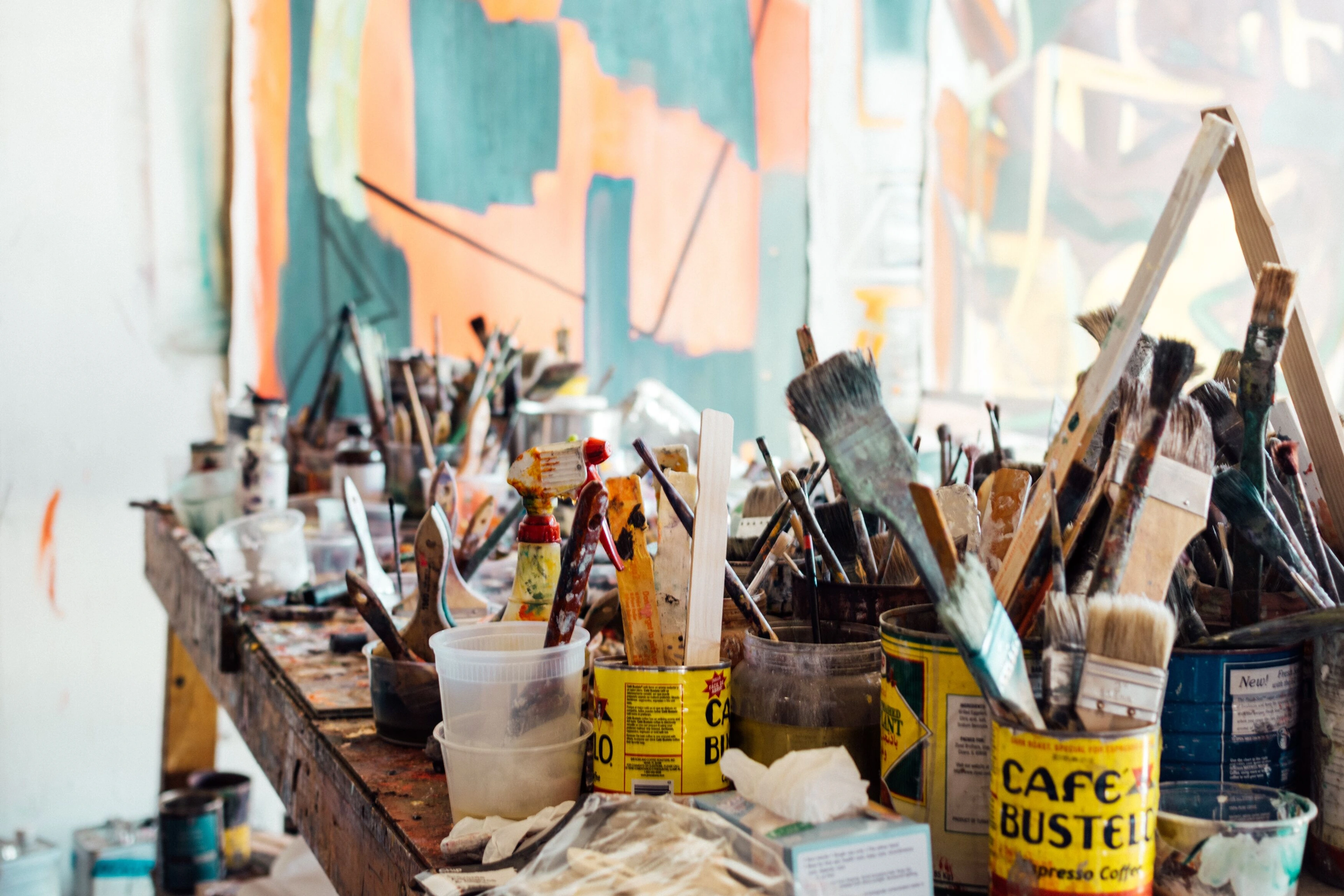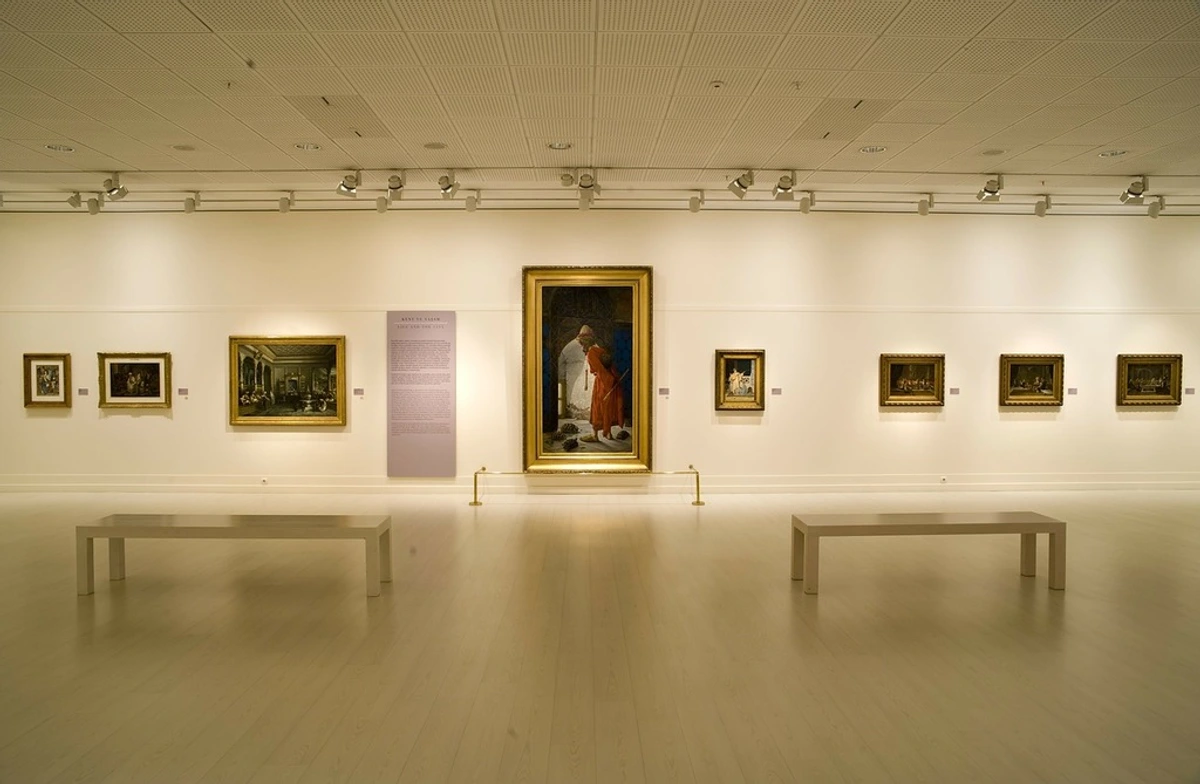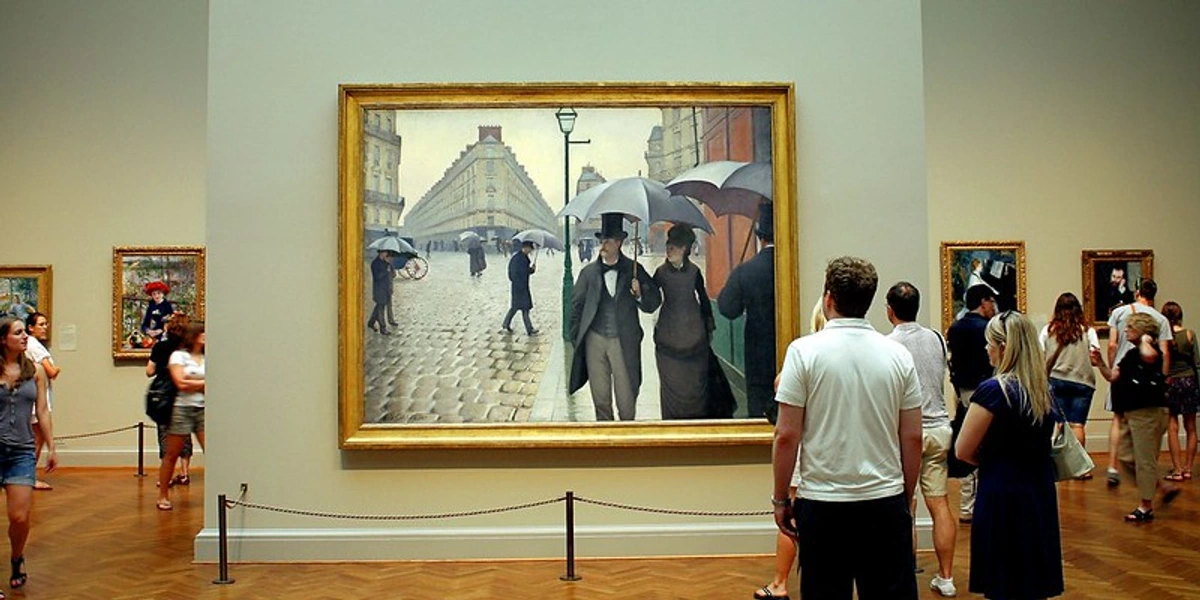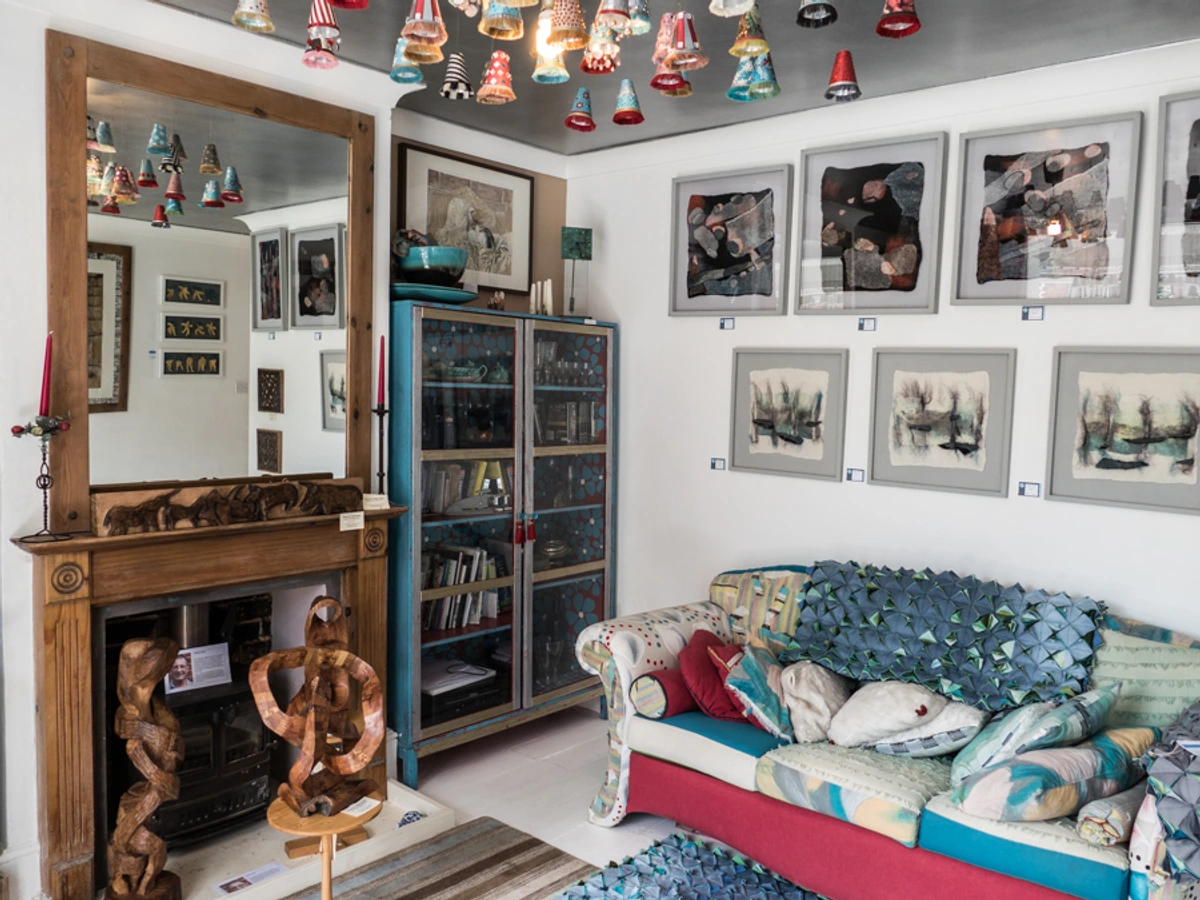
How to Define Your Personal Art Style and Taste: A Discovery Guide
Discover how to define your unique personal art style and taste. Our guide helps you explore, analyze, and understand your art preferences. Find art you love!
How to Define Your Personal Art Style and Taste
Understanding your personal art style (if you're a creator) or your art taste (if you're an appreciator or collector) is a journey of self-discovery. It helps you connect more deeply with art, make confident choices, and express your unique perspective. It’s not about finding a rigid box to put yourself in, but rather understanding the currents that pull you towards certain forms of expression. Here’s how to define yours:
1. Explore Widely and Observe
You can't know what you like (or want to create) without exposure. Seriously, you have to see stuff first.
- Visit Galleries & Museums: See art in person. Notice scale, texture, and presence. The way a massive canvas dominates a room or the subtle details you only catch up close can't be replicated online.
- Browse Online: Use platforms like Pinterest, Instagram, Behance, and museum websites (like the Met, MoMA, Rijksmuseum). These are great for casting a wide net.
- Look at Art Books & Magazines: Explore different periods, genres, and artists. Sometimes the curated context of a book offers a different perspective.
- Pay Attention: Notice art in public spaces, films, and even graphic design. Aesthetics are everywhere!
Don't judge initially, just absorb. Look at abstract art, realism, impressionism, surrealism, photography, sculpture, digital art, etc. It can feel overwhelming, like trying to drink from a firehose of visuals. That's okay. Just let impressions wash over you at first.
Look Beyond the Obvious
Go beyond the "greatest hits." While understanding famous movements like Impressionism or Cubism is valuable, seek out lesser-known artists, local galleries, student shows, or even street art. Sometimes the most resonant discoveries are off the beaten path. Also, consider your reactions to design in everyday life – fashion, architecture, interior design. These preferences often reflect your underlying aesthetic sensibilities. What colours dominate your wardrobe? What style is your furniture? These aren't art in the gallery sense, but they are clues.
2. Analyze Your Reactions
As you explore, ask yourself why certain pieces resonate. This is where the real detective work begins.
- What catches your eye first? Color, subject matter, technique, composition? Is it the raw energy or the quiet stillness?
- What emotions does it evoke? Calm, excitement, curiosity, nostalgia, unease, joy? Don't dismiss negative reactions – understanding why you dislike something is just as revealing. Sometimes, a piece I initially recoil from ends up sticking in my mind, forcing me to question why it provoked such a strong response.
- What specific elements do you like? Bold lines, subtle shading, specific color palettes, complex details, simplicity?
- Is it the medium (oil paint, watercolor, digital, clay) or the technique (impasto, pointillism, collage) that draws you in? The physical stuff of art matters.
Keep notes (digital or physical) about pieces you love and dislike, noting your reasons. A simple "Love this - feels calm" or "Hate this - too chaotic" is a start. Later, try to elaborate: "Love the muted blues and soft focus, reminds me of foggy mornings" or "Dislike the clashing neon colors and sharp angles, feels aggressive."
Consider the Context
Sometimes, knowing a little about the artist's life, the historical period, or the intended meaning of the art can deepen your understanding and shift your reaction. Did the artist create this during wartime? Was it a commission? Is it part of a series? This isn't always necessary, but context can unlock new layers of appreciation.
3. Identify Recurring Themes and Elements
Look for patterns in the art you're drawn to. This is where your personal map starts to take shape.
- Common Subjects: Landscapes, portraits, abstracts, figures, animals, everyday objects?
- Consistent Moods: Vibrant and energetic, calm and serene, dark and mysterious, playful, melancholic?
- Preferred Colors: Bright, muted, monochromatic, specific combinations (e.g., earthy tones, cool blues)?
- Dominant Styles: Realistic, stylized, cartoonish, painterly, minimalist, abstract?
This helps you pinpoint core aspects of your art taste. Don't worry if you like seemingly contradictory things! Appreciating both stark minimalism and lush baroque painting is perfectly fine (see FAQ Q3). Your taste is yours, not a pre-packaged category.
Where Does Your Taste Come From? Connecting Art to Life
This pattern recognition often reveals deeper connections to your own life. Why do you consistently gravitate towards serene landscapes or energetic abstracts?
- Personal Experiences: Did you grow up near the ocean, influencing a love for blue palettes? Does a certain type of portraiture remind you of family photos? Our memories and formative experiences inevitably shape our aesthetic preferences.
- Values and Beliefs: Are you drawn to art that challenges norms, reflects social justice themes, or celebrates tradition? Your core values might be reflected in the art that speaks to you.
- Personality: Are you introverted and find solace in minimalist art? Extroverted and drawn to bold, expressive works? Your personality can influence the kind of energy you seek in art.
- Current Needs: Sometimes, what we're drawn to reflects what we need. Feeling stressed? You might seek out calming, orderly art. Feeling stagnant? Maybe vibrant, dynamic pieces catch your eye.
Thinking about these connections isn't about psychoanalyzing yourself into a corner; it's about enriching your understanding. Recognizing why you like what you like makes your connection to art more personal and meaningful. It transforms passive viewing into an active dialogue with the work and, ultimately, with yourself.
4. Learn Basic Art Terminology
Understanding terms helps you articulate your preferences and search more effectively. Learn about:
- Art Movements/Genres: Impressionism, Surrealism, Pop Art, Minimalism, Fauvism, Abstract Expressionism, etc. Knowing these helps you find more of what you like.
- Elements of Art: Line, shape, form, color, texture, space, value. These are the building blocks. See our guide on the Elements of Art Explained.
- Principles of Design: Balance, contrast, emphasis, movement, pattern, rhythm, unity. These explain how the blocks are arranged.
- Mediums & Techniques: Oil, acrylic, watercolor, digital, printmaking, sculpture, collage, impasto, glazing, Pointillism.
You don't need a PhD in art history, but knowing a few key terms empowers you.
5. Finding the Words: Talking About Your Art Style and Taste
Knowing the terms is one thing; using them confidently is another. Articulation bridges the gap between your internal feeling and external communication, whether you're discussing art with friends, explaining your preferences to a gallerist, or defining your own artistic goals.
Let's be honest, sometimes staring at a piece, especially abstract art, and trying to explain why you like it feels like trying to describe the taste of water. It can be elusive. But practice helps!
- Start with the Basics: Use the terms you learned. "I'm really drawn to the vibrant colors and dynamic movement in this piece." or "I prefer the minimalist composition and monochromatic palette here."
- Connect to Emotion: Link the visual elements to your feelings. "The soft, blended brushstrokes create a really calm and dreamlike mood." or "The sharp lines and high contrast feel energetic and exciting."
- Make Comparisons: Relate it to other things you know. "This reminds me of Van Gogh's expressive style, but with a more modern subject." or "The way the artist uses light feels similar to Impressionist paintings, but the subject is very contemporary."
- Ask Questions: If discussing with others, asking questions shows engagement. "What do you think the artist is trying to convey with this color choice?" "How does this piece make you feel?"
- It's Okay to Be Subjective: Frame your opinions as your own. "For me, this feels..." "I interpret this as..." Art is subjective; owning your perspective is key. You can learn how to read a painting to gain more tools for analysis, but your personal reaction is always valid.
- Don't Fear "Wrong" interpretations: While understanding context is valuable, your initial, gut reaction has merit. There isn't always a single correct answer in art appreciation. If you need help with specific terms, a simple art jargon glossary can be useful.
The goal isn't to sound like an art critic overnight, but to become more comfortable sharing your unique response to the visual world.
6. (For Artists) Experiment and Create: Finding Your Voice
If you're an artist defining your style, seeing and analyzing isn't enough – you have to make. This is where exploration meets action.
- Try Different Mediums & Techniques: Don't be afraid to step outside your comfort zone. If you always paint, try sculpture. If you're digital, try printmaking. New tools can unlock new ideas.
- Emulate Artists You Admire (Temporarily): Analyze their process – how do they use color? Structure compositions? Apply paint? Try incorporating elements of their approach, then consciously adapt it to your own voice. Don't copy long-term. This is about learning, not plagiarism.
- Focus on What You Enjoy: The process should feel engaging, even if challenging. What techniques feel natural? What subjects keep pulling you back? Your joy is a compass. Sometimes finding inspiration to make art comes from simply trying something you think you'll enjoy.
- Create Consistently: Your style emerges through practice and iteration. It's rarely a lightning bolt moment. It’s the sum of thousands of small decisions made over time. Don’t obsess over finding "your style" on day one. Focus on the making.
Style vs. Voice
While related, style and voice aren't identical.
- Style is often the how – the visual characteristics, techniques, medium choices (e.g., painterly brushstrokes, geometric shapes, muted palette).
- Artistic Voice is more the what and why – the underlying themes, messages, perspectives, and personality that come through your work consistently, regardless of slight stylistic shifts. It's your unique point of view expressed visually.
Developing your style is part of finding your voice. As you experiment and refine your techniques (style), the recurring themes and perspectives that are authentically yours (voice) will become clearer. Don't force it; let it emerge through dedicated work and reflection. Ask yourself: What do I really want to say with my art?
7. It's Okay to Change: The Evolving Nature of Your Artistic Self
Think of defining your style or taste not as carving something in stone, but as mapping a river. The river has a general direction, core characteristics, but its exact path shifts, eddies, and flows over time. It's alive.
- Life Happens: Major life events, travel, new relationships, personal growth – these all impact how you see the world and, consequently, the art you connect with or create.
- Knowledge Grows: Learning more about art history, techniques, or different cultures inevitably expands your horizons and refines your palate. What seemed uninteresting before might suddenly click.
- Exposure Broadens: The more diverse art you encounter, the more reference points you have. Your taste might become more eclectic or more specific as you see more possibilities.
- The World Changes: Social, political, and technological shifts influence artistic themes and styles. Your engagement with the contemporary world shapes your perspective.
Embrace this evolution! It's a sign of growth and engagement. Looking back at art I loved ten years ago, or even my own older work (you can see some of that journey on my timeline), I can see clear shifts. Some core elements remain, but new interests have emerged. It’s fascinating, not frustrating. Your "definition" is a snapshot of an ongoing journey.
Summary: Key Steps to Definition
Step | Action for Taste (Appreciator) | Action for Style (Creator) | Key Insight Added |
|---|---|---|---|
| 1. Exploration | View diverse art (online, museums, books) | View diverse art + study other artists' work | Look beyond the obvious; connect to everyday life. |
| 2. Analysis | Note emotional/visual reactions (Why?) | Note reactions + analyze techniques/choices | Analyze dislikes; consider context. |
| 3. Pattern Recognition | Identify recurring themes, colors, moods | Identify recurring elements in own preferences | Connect patterns to personal life/values. |
| 4. Learn Terms | Understand genres, elements, mediums | Understand terms to describe own goals/process | Foundation for articulation. |
| 5. Articulation | Practice describing preferences/reactions | Practice articulating artistic goals/process | Bridge internal feeling & external communication. |
| 6. Experimentation | N/A (or try different display methods) | Try new mediums, techniques, subjects; create! | Distinguish style vs. voice; embrace process. |
| 7. Embrace Evolution | Accept that taste changes over time | Accept that style evolves; reflect on changes | View definition as a journey, not a destination. |
| 8. Reflection | Refine understanding of preferences over time | Analyze own work; see what feels authentic | Consistent self-awareness fuels definition. |
Note: Table slightly modified to incorporate new sections/insights.
Frequently Asked Questions (FAQ)
Q1: How long does it take to define my art style or taste? A: It's an ongoing process, not a destination. Your preferences can evolve as you see more art and have new life experiences. Be patient and enjoy the journey. There's no deadline!
Q2: Can my art taste or style change over time? A: Absolutely! Exposure to new art, learning, personal growth, and changing circumstances can all influence your preferences and creative output. As discussed in Section 7, this is natural and expected.
Q3: Is it okay to like very different types of art? A: Yes! Having diverse tastes is common and perfectly fine. You might appreciate minimalist sculpture and intricate baroque paintings. Your style as an artist might also blend seemingly disparate influences. Authenticity beats forced consistency.
Q4: I'm not an artist. Why should I define my art taste? A: Defining your art taste helps you confidently choose art for your home, appreciate museum visits more deeply, understand your own aesthetic preferences better (which can inform other choices, like decor or fashion), and engage in more meaningful conversations about art.
Q5: Where do I even start if I feel like I know nothing about art? A: Start broad! Visit a local museum or browse a major museum's collection online (like the Met, MoMA, Rijksmuseum). Don't worry about understanding everything; just notice what visually appeals to you first. Follow art accounts on social media. Look at art books in a library. The first step is just looking.
Q6: What about those "Find Your Art Style" quizzes online?
A: They can be a fun starting point! Think of them like personality quizzes – entertaining, maybe offering a little insight or pointing you toward styles you haven't considered (like what is my aesthetic art searches). However, they are often superficial and can't replace the deep personal exploration, analysis, and (for artists) creation needed to truly understand your unique style or taste. Use them for fun, but don't take the results as definitive.
Q7: How do I distinguish between liking a trend and developing genuine personal taste? A: This is tricky! Trends influence us all. Ask yourself: Do I like this because I see it everywhere, or does it resonate on a deeper level? Does it connect with the patterns you've already identified (Section 3)? Does your appreciation persist over time, even after the trend fades? Genuine taste often feels more enduring and personally meaningful than chasing the latest fad.
Q8: How do I find art that fits my taste and my budget? A: Great question! Once you have a better sense of your taste, you can explore different avenues. Consider emerging artists (spotting value here), art prints (guide to buying prints), photography, or works from local art fairs or student shows. Online galleries and platforms also offer a wide range of price points. Check out resources like starting an art collection on a budget or tips for buying art for less. Sometimes, buying art online directly from artists, like the pieces available here, can offer unique finds.
Conclusion
Defining your personal art style or taste is a rewarding process of exploration and introspection. It's more compass than map – guiding you rather than dictating a fixed route. By actively looking, analyzing your responses, identifying patterns, finding the words to articulate your feelings, and (for artists) experimenting consistently, you'll develop a clearer, more confident understanding of what resonates with you. Embrace the journey, trust your instincts, and remember that your unique perspective is not only valuable but also wonderfully, inevitably prone to evolution.








